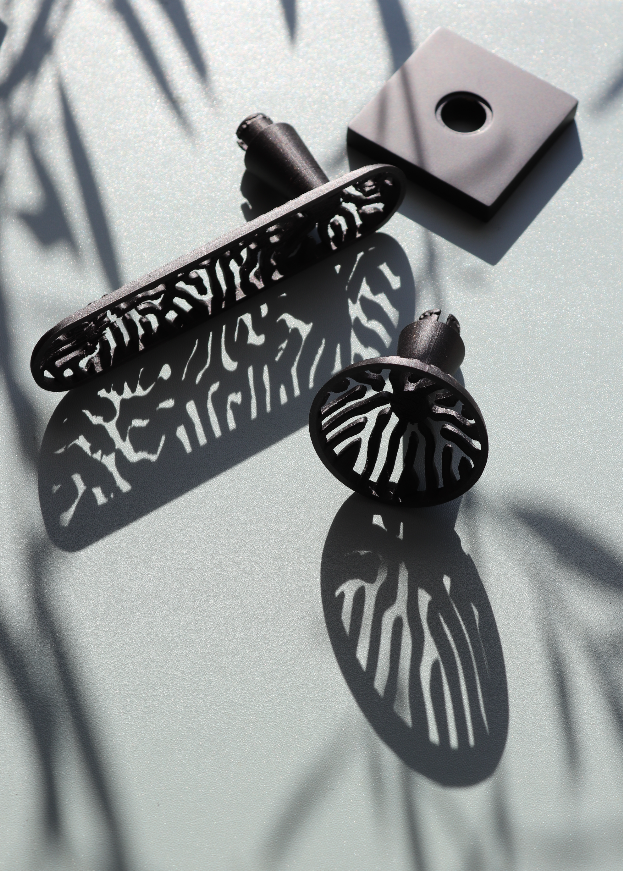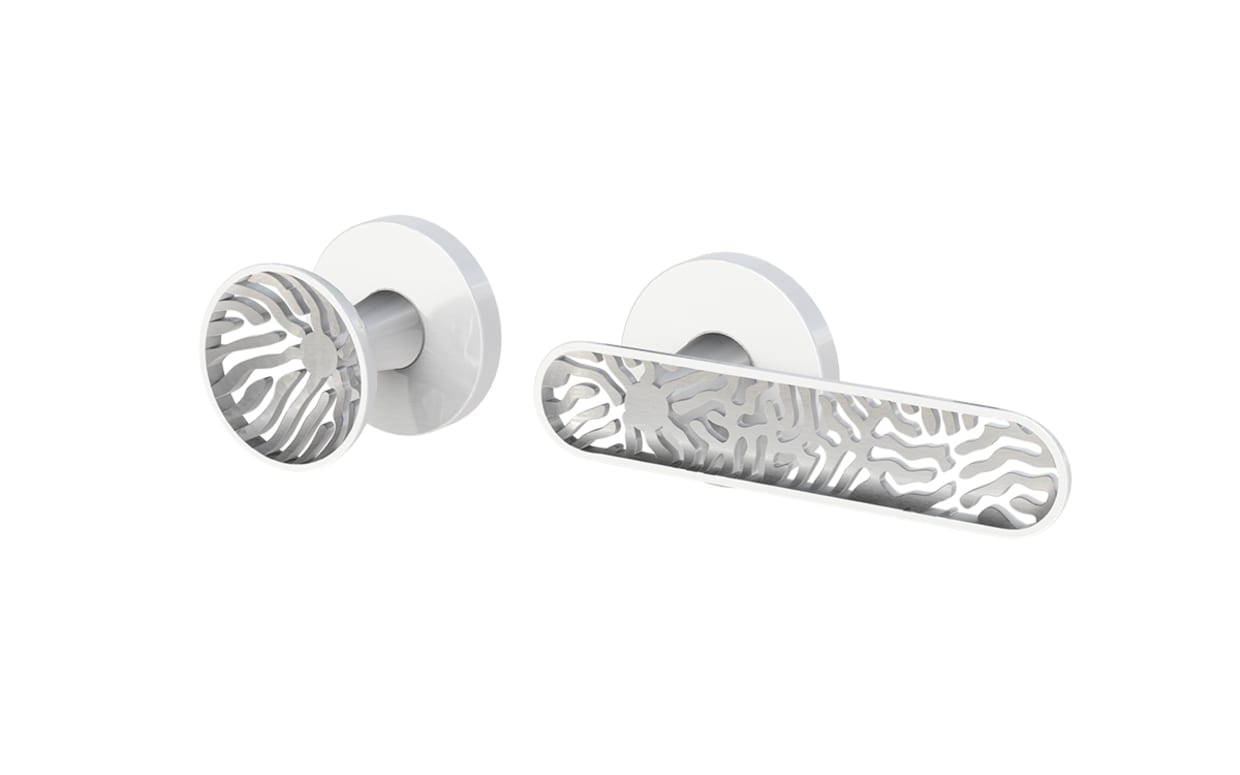The Galapagos Project
Emtek's Exploration of 3D Printed Door Hardware
Emtek has developed a computer algorithm, capable of generating patterns that mimic the variations seen in nature. A limited series of truly unique patterns will be generated and produced with 3D printed metals. Each 3D printed handle will represent their own variation of The Galapagos Project. Emulating nature, no two pieces will be identical.

3D Printing in Emtek's History
The rapid prototyping with 3D printing has truly revolutionized the industrial design process. Emtek's design team has utilized 3D printing for over a decade to fine tune the most important aspects of our door hardware: its touch. Touch is a detail so important to us that every piece of hardware we develop is refined through multiple iterations of 3D printed prototyping.
Technology never rests. We now have access to 3D printing with metal alloys, like stainless steel and copper. With the ability to utilize these materials, we challenged ourselves to explore how 3D printing can revolutionize our world beyond protoyping.
Technological Innovations
We stumbled upon the abstract idea that inspired us on our expedition into this emerging technology. We noticed similarities between the programming code containing the instructions to produce a part with a 3D printer, and with DNA, the genetic code for replication contained within most living organisms.
We asked ourselves, "what if we could make our 3D prints more like living organisms, with their own unique characteristics?"
Variations through Algorithms
Algorithms can generate an infinite amount of truly unique patterns, mimicking the random variations seen in nature.
We developed our own algorithmic program, The Galapagos Project, named after the islands where Charles Darwin first witnessed rapid adaptations in nature, during his journey around the globe.
Our intent is to create pieces of hardware that are truly unique, with no two pieces being identical.
Hear from Emtek's Director of Design and New Product Innovation, William Zhang:
Did you miss the premiere of this collection?
See our KBIS recap, including The Galapagos Project, here:





